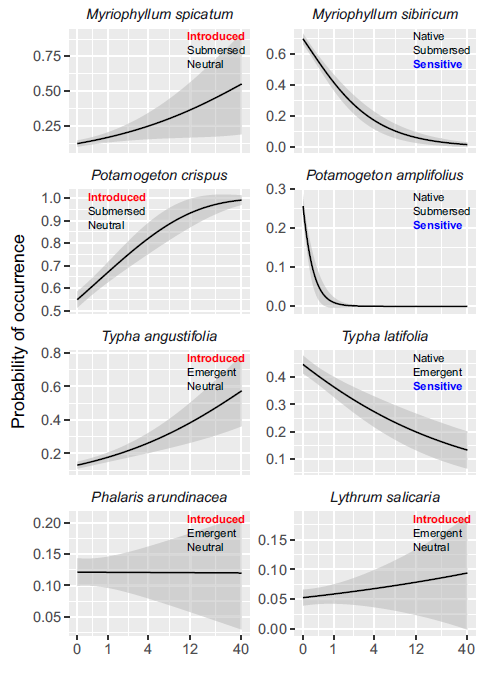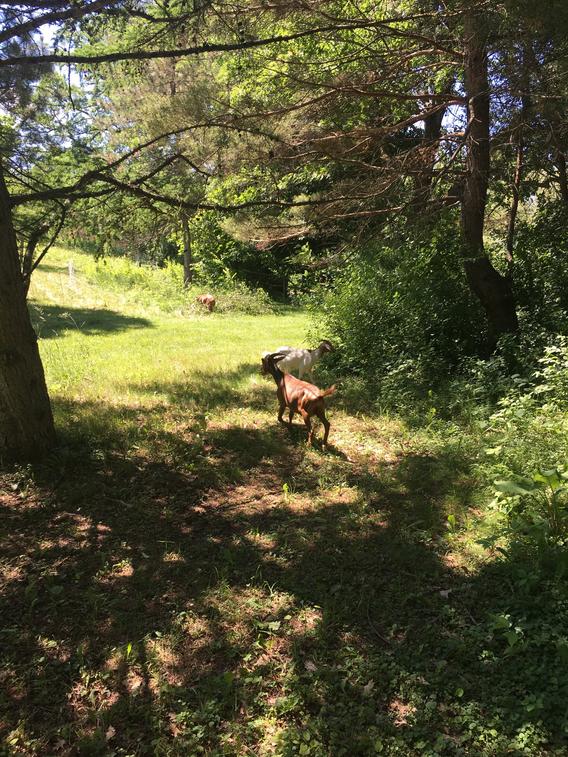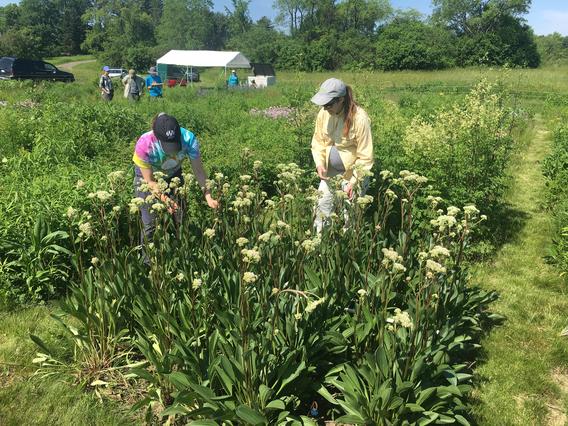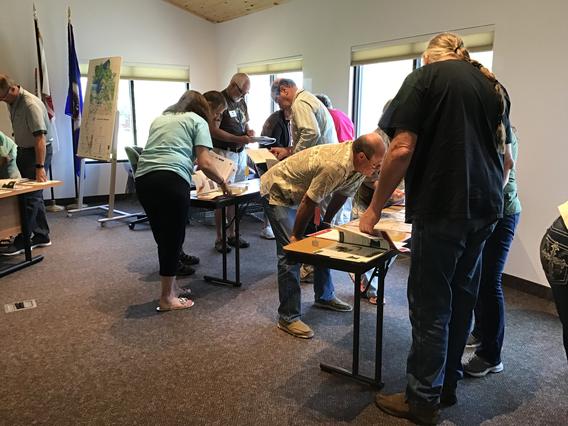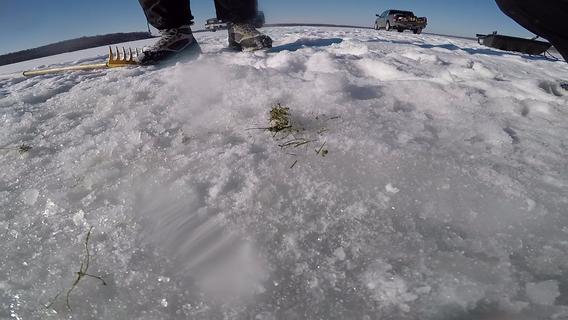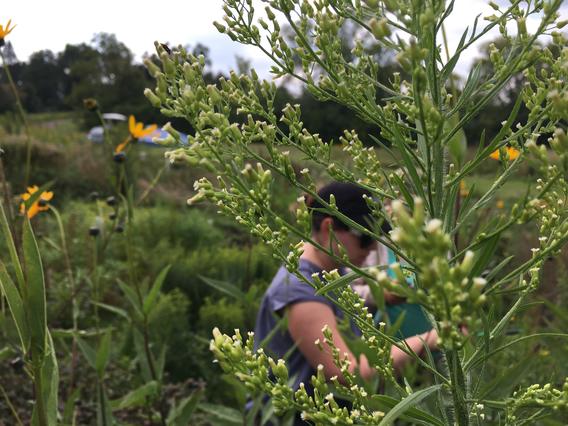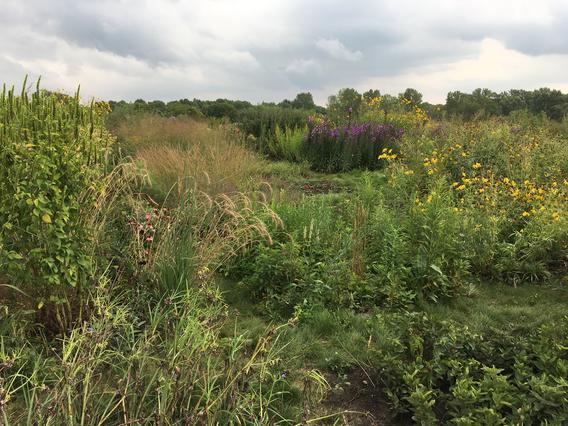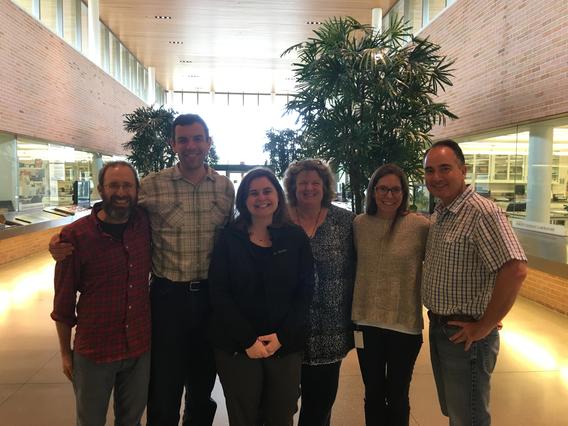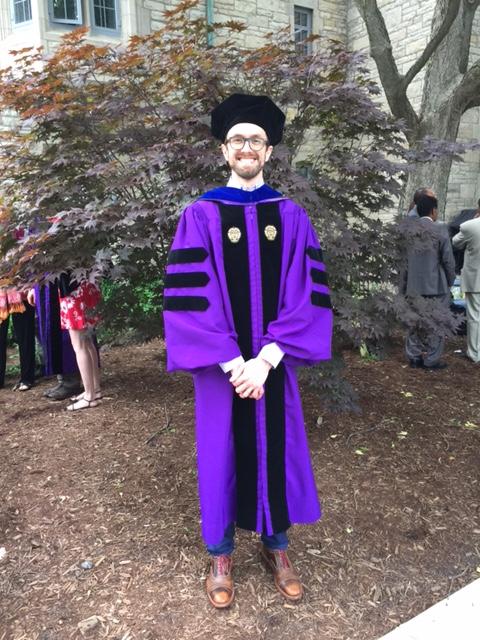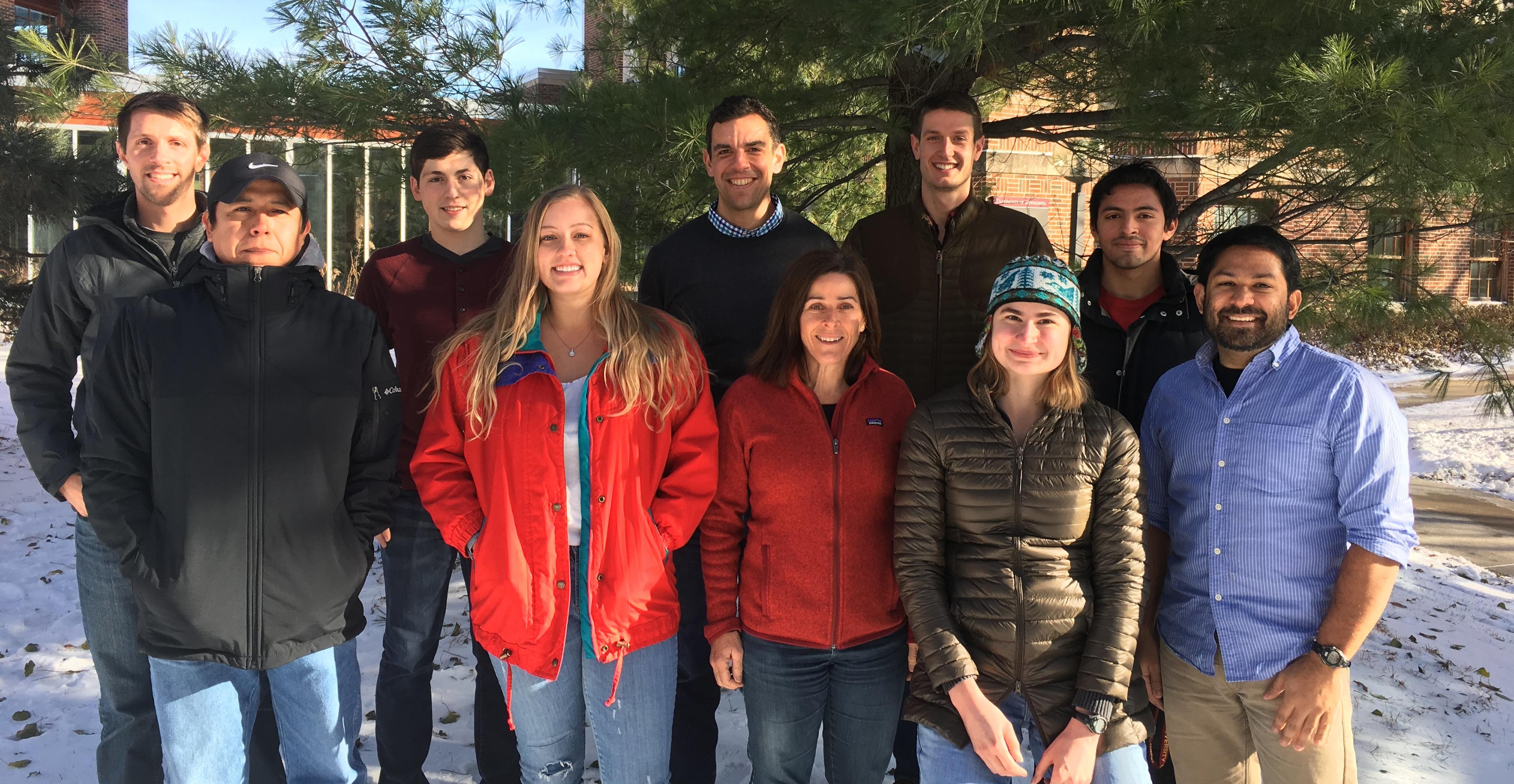
We are in the Department of Fisheries, Wildlife, and Conservation Biology at the University of Minnesota-Twin Cities.
We focus on applied problems in plant ecology, particularly related to ecological restoration and invasive species management. We are interested in how plant communities respond to species invasions, anthropogenic disturbances, and other drivers of change, and how we can improve our ability to restore diverse, resilient, high-functioning ecosystems.
Our study systems include lakes, wetlands, woodlands, and prairies. We use observations, synthesis, and experiments to (1) understand the contributions of plant communities to key functions, (2) investigate causes and consequences of plant species invasions, (3) evaluate the extent to which restored habitats perform desired functions, and (4) develop guidance for restoration, conservation, and invasive species management.
News
2023
- Thank you to fellow organizers Karin Kettenring and Carrie Adams and a great group of speakers for a fun and inspiring symposium on aquatic revegetation at the Society of Wetland Scientists annual meeting.

- A new paper in Ecology shows that complementarity in grassland productivity increased with higher phylogenetic diversity. In contrast, selection effects decreased with higher phylogenetic and functional diversity. This is consistent with the expectation that diversified portfolios of traits, resource-acquisition strategies, and other ecological differences foster complementarity among co-occurring species.
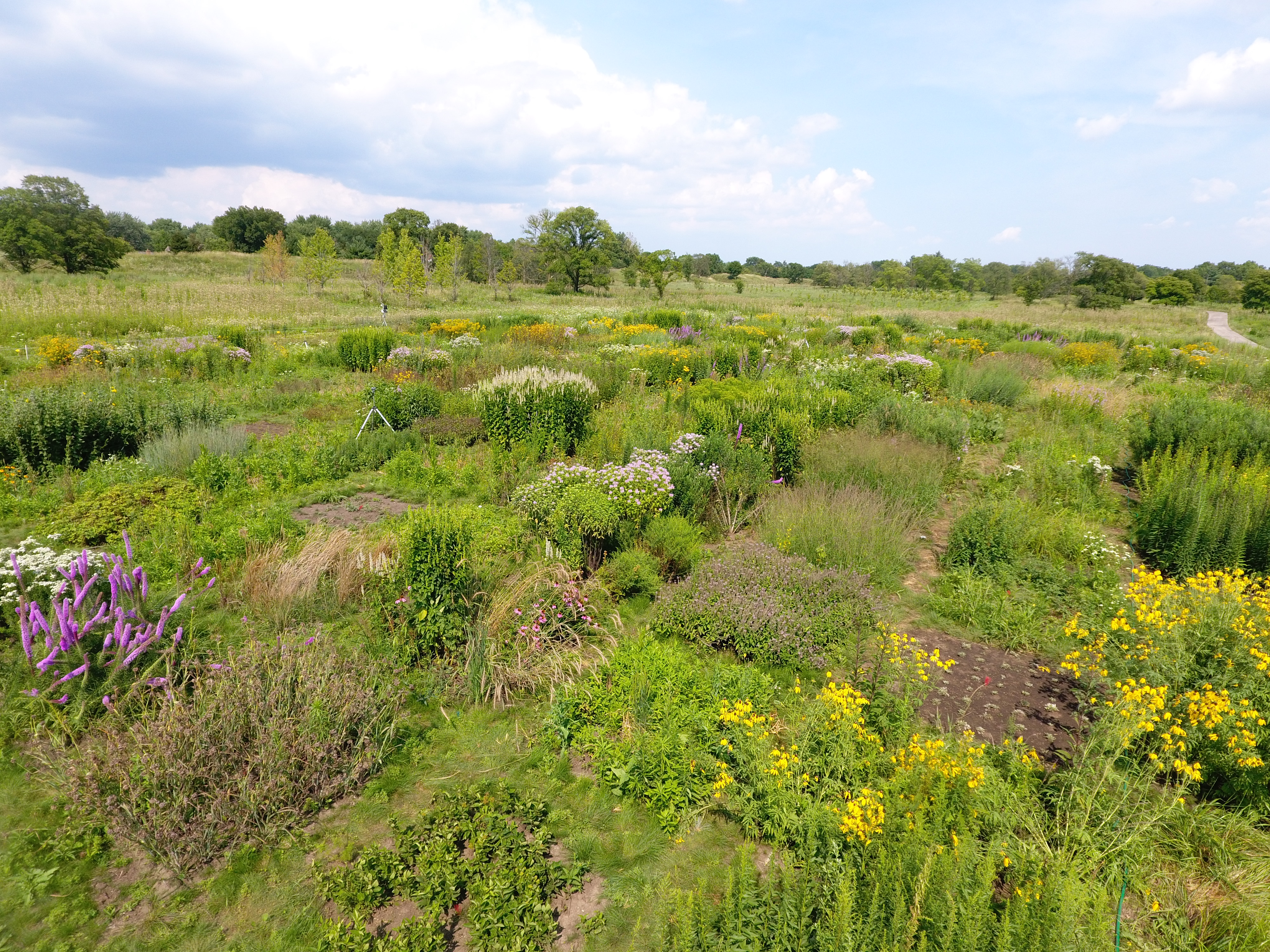
- Thank you to the National Academy of Sciences for organizing an outstanding working group in Amman, Jordan on restoration of Iraq's Mesopotamian Marshes. It was a privilege to work with this phenomenal group of Iraqi and U.S. scientists.
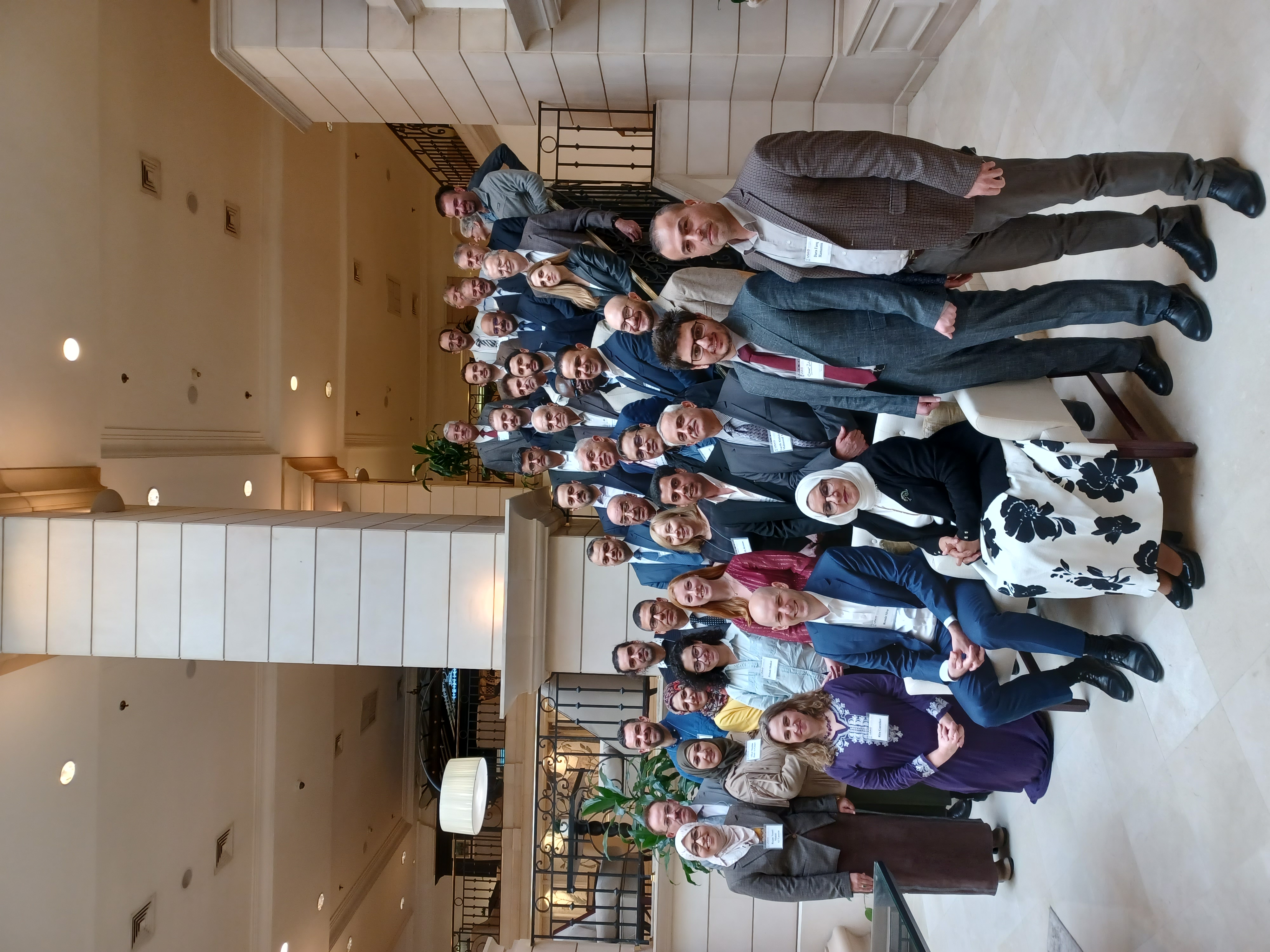
- A paper in Restoration Ecology led by Drs. Rebecca Barak and Nisa Karimi contrasts development of experimental grassland restoration plots that were started from seeds vs. plugs. Either planting method yielded communities that were as phylogenetically or functionally diverse as their initial design, but some species did exceptionally well if seeded in while others established better from plugs:

2022
- Congratulations to Dr. Michael R. Verhoeven! Mike completed his PhD on community assembly and management of aquatic plant communities in December 2022 and is now a postdoctoral researcher with Dr. Gretchen Hansen.
- Congratulations to Sara Nelson on completion of her Master's degree addressing restoration of buckthorn-impacted woodlands and savannas!
- A warm welcome to the University of Minnesota to new graduate students Abha Panda (pursuing a PhD in aquatic restoration ecology) and Jaron Cook (MS student evaluating plant diversity in CRP grasslands)!
- Are you interested in learning more about aquatic invasive species management? Our online training, AIS Management 101, helps non-professionals be better-informed decision-makers and consumers of lake management services, as shown in this study paper led by my Extension colleague Megan Weber in Invasive Plant Science and Management.
- Wes Glisson led two papers on starry stonewort phenology (Aquatic Botany) and control (Management of Biological Invasions). Together, these studies show that starry stonewort is occupying a distinct phenological niche in Minnesota and poses unique challenges for aquatic plant management.
- One of the more labor-intensive steps in meta-analysis is gathering variances from primary studies for inverse weighting of effect sizes. A simulation study led by statistician Robert Buck provides good news on that front: the popular effect-size statistic Hedges d generally performs just as well without weighting, potentially enabling future meta-analyses to be less cumbersome and more inclusive (Methods in Ecology and Evolution).
Spring 2021
- A pair of papers addressing the effects of phylogenetic and functional diversity on community dynamics in tallgrass prairie: Dr. Nisa Karimi led a paper in Journal of Ecology on the interplay of phylogeny and traits in development of experimentally restored prairie plots. Dr. Adrienne Ernst's investigation of invasion dynamics using a large-scale, long-term monitoring dataset showed the importance of phylogenetic dimensions of diversity and time-series data in understanding the "invasion paradox," also in Journal of Ecology.
Fall 2021
- Welcome to new M.S. students Sirena Torres (wild rice and climate change) and Mike Tuma (plant-community responses to hybrid cattail management) and PhD student Steve Smith (aquatic plant ecology)!
- Results of a plant competition experiment led by Evelyn Williams are now out in Oecologia. We explored how environmental stress and relatedness (phylogenetic distance between competing species) interact to influence the strength of competition. Under stressful conditions, more distantly related species competed more strongly. Conversely, under benign conditions more distantly related species pairs competed less---both of these findings were contrary to our expectations that distant relatives would compete less under stressful conditions.
- We leveraged Mike Verhoeven's assembly of a statewide aquatic vegetation dataset for Minnesota to develop species distribution models for Eurasian watermilfoil based on presence–absence, presence-only, and abundance data. A new paper in Ecology & Evolution, led by Shyam Thomas, enriches understanding of Eurasian watermilfoil invasion and offers broader insights into the limitations of metrics that are commonly used to evaluate the accuracy of species distribution models.
Spring 2021
- Congratulations to Rafael Contreras-Rangel, M.S. 2021! Rafa studied algaecidal control of the invasive alga starry stonewort.
- Congratulations to Carli Wagner, M.S. 2021! Carli also worked on starry stonewort, focusing on its plant community impacts in Minnesota lakes. She is now an AIS Specialist with the Minnesota DNR.
- Hybrid watermilfoil, the hybrid offspring of an invasive parent (Myriophyllum spicatum) and a native parent (Myriophyllum sibiricum) exhibits phenological and growth traits consistent with hybrid vigor and increased invasiveness according to a new paper in Biological Invasions led by Wes Glisson.
- Restoration practitioners are increasingly employing livestock like goats, sheep, and cattle for targeted grazing of invasive plants. But there is often uncertainty in the effectiveness of these methods. Katie Marchetto used meta-analysis to evaluate outcomes of targeted grazing with respect to invader control and broader plant community responses---now out in Restoration Ecology.
Fall 2020
- I was greatly honored to receive the 2020 University of Minnesota Extension Dean's Award for Distinguished Campus-based Faculty.
- Congratulations to Mike Verhoeven, who was recognized as the 2020 Outstanding Conservation Sciences PhD Student awardee for 2020!
Spring 2020
- Jesus Pinto Ledezma led an analysis published in Ecological Monographs that used three decades of oak savannah data from Cedar Creek to investigate taxonomic, phylogenetic, and functional dimensions of non-native plant invasions.
- An invasive fish (common carp) promotes invasive plants in Minnesota lakes, in Freshwater Biology with Marcus Beck and Przemek Bajer. Note the difference in sensitivity to carp of native and non-native relatives for example (y-axis is probability of the plant species being found in a lake, x-axis is a measure of carp abundance):
- Mike Verhoeven used an unprecedented aquatic vegetation monitoring dataset to perform fine-resolution ecological niche modeling to characterize potential for competitive displacement of native macrophytes by two widespread but ecologically distinct invasive plants, Eurasian watermilfoil and curlyleaf pondweed. Check out our new paper in Diversity to learn more.
- Using goats as a buckthorn management tool in woodland restoration has been taking off in the Midwest, but could goats be spreading buckthorn even as they are being deployed to control it? Probably not via endozoochory (eating berries and spreading viable seeds to new locations) based on experiments and literature synthesis led by Katie Marchetto and out now in Natural Areas Journal.
- Does sediment excavation improve plant-community restoration outcomes in prairie pothole wetlands? It does for a while, but eventual dominance by reed canarygrass and hybrid cattail undercuts the benefits, according to this new paper in Restoration Ecology led by Sarah Winikoff.
Winter 2020
- Two new papers in the Journal of Aquatic Plant Management led by Wes Glisson address how long starry stonewort can stay viable out of water, an important factor in risk of overland spread, and describe an underwater video sampling device we developed to enable new measurements of aquatic plant growth and phenology.
- Both factors within (e.g., herbicide management) and beyond resource managers' control (e.g., winter severity) determine the effectiveness of invasive plant control efforts. Mike Verhoeven demonstrates this nicely through a synthesis of outcomes of curlyleaf pondweed management in 50 Minnesota lakes now available in Freshwater Biology.
Fall 2019
- It was a great honor for our AIS program to receive the 2019 University of Minnesota Extension Dean's Award for Distinguished Team at this year's Program Conference.
- Congratulations to M.S. student Carli Wagner on her new position as an AIS Specialist with the Minnesota Department of Natural Resources!
- Thrilled that Ph.D. alum Rebecca Barak will be leading restoration research to new frontiers as a Conservation Scientist at Chicago Botanic Garden and Northwestern University faculty!
Summer 2019
- Where is invasive Phragmites australis (common reed) established in Minnesota? Visit our MnPhrag website for latest map, identification guide, management recommendations, and more.
- Great to get out in the field recently with M.S. student Sara Nelson (efficacy of goat browsing for buckthorn management).
- Heck of a year for Arnoglossum plantagineum in the phylo/functional restoration experiment at Morton Arboretum!
Spring 2019
- Team AIS Extension (Megan Weber, Pat Mulcahy, and I) traveled Minnesota again this spring to teach five AIS Detectors workshops
- I was excited to be part of this new article in Wetlands led by Sheel Bansal (USGS), which provides a fantastic review of the state of knowledge on the ecology and management of invasive cattail in North America.
- Great to work with Team Typha again on this paper in Ecology & Evolution, led by Shane Lishawa of Loyola University Chicago, which shows that removal of invasive cattail--and its litter--can increase taxonomic and phylogenetic diversity of Great Lakes coastal wetlands.
December 2018
- After a busy fall semester for PhD student Mike Verhoeven (and his committee members!), Mike successfully defended his Master's and advanced to doctoral candidacy by passing his written and oral preliminary exams. Way to go, Mike!
November 2018
- How do biotic and abiotic factors influence plant invasions in restored prairies? Evelyn Williams' new manuscript in Basic and Applied Ecology shows that, at the neighborhood scale at which plants directly interact with each other, invasions were mediated by biotic factors: invasive species that were more closely related to the resident community were more likely to invade (consistent with Darwin's pre-adaptation hypothesis) and neighborhoods with more resident species were less likely to be invaded (consistent with the biotic resistance hypothesis). At the larger, site scale, invasibility was driven by abiotic factors: soil organic matter, soil pH, and soil heterogeneity.
- A continental analysis of North America's vascular plant flora led by Jesús Pinto-Ledezma, and published in Frontiers in Ecology and Evolution, integrated taxonomic, functional, and phylogenetic approaches to examine how patterns of beta diversity correspond to biome boundaries.
September 2018
- Congratulations to our own Carli Wagner, recipient of the Conservation Sciences Master's Student of the Year award for 2017-2018!!!
- How can we do a better job training citizen scientists to contribute to invasive species surveillance and response efforts? By "flipping the classroom" based on our analysis of two UMN Extension programs reported in the Journal of Extension.
- A chapter led by Andrew Hipp in the new book Phylogenetic Diversity details our efforts to construct a robust experiment for testing the effects of phylogenetic diversity on restoration outcomes, i.e., not conflating phylogenetic diversity with phylogenetic identity (a.k.a., there are an awful lot of Asteraceae spp. in prairies!)
August 2018
- We are excited to welcome some new faces to the lab! MS students McKaylee Duquain and Sara Nelson will be conducting research related to wild rice conservation (McKaylee) and response of native vegetation to common buckthorn removal using goats (Sara).
- We bid a fond farewell to 2016-18 postdoctoral researcher Ranjan Muthukrishnan, who has moved to Indiana University as a Fellow in the Environmental Resilience Institute.
- Speaking of Ranjan, his paper predicting risk of starry stonewort invasion in Minnesota and Wisconsin lakes based on water chemistry is now out in Aquatic Botany. This research was conducted in collaboration with Robin Sleith and Ken Karol of the New York Botanical Garden.
June 2018
- A busy spring of workshops with Extension colleagues Megan Weber and Pat Mulcahy led to the minting of 96 new AIS Detectors! Giving us a great distribution of over 200 AIS Detectors throughout Minnesota:
May 2018
- How can we predict how quickly plant species used in restoration will germinate? By using information about seed traits and evolutionary history, as Becky Barak demonstrates for 32 prairie species in a new paper in Ecology and Evolution (check out this artwork by Julia Ferguson!)
April 2018
- New review paper on starry stonewort biology, ecology, and management from the Nitellopsis Working Group (UMN, New York Botanical Garden, Central Michigan Univ., Univ. of Geneva, Univ. of Wisconsin, Minnesota DNR) now available in Aquatic Botany.
March 2018
- New paper in Journal of Ecology on diversity-invasibility relationships in Minnesota aquatic plant communities! Led by Ranjan Muthukrishnan, in collaboration with Nicole Hansel-Welch of MnDNR's Shallow Lakes Program, and covered by MPR News and the A.P.
- Our paper on starry stonewort management in Lake Koronis, led by Wes Glisson, is now out in Lake and Reservoir Management and was covered in an Associated Press story.
February 2018
- Exciting action shots from under-ice sampling of starry stonewort phenology
October 2017
- Our project on ecological and human dimensions of wild rice conservation has been funded by the University of Minnesota's Grand Challenges program. I look forward to working with our project team (led by PI Crystal Ng) and partners!
September 2017
- Great to have new graduate students Rafael Contreras-Rangel and Carli Wagner join the lab!
- Welcome Jesús Pinto-Ledezma! Jesús is a Grand Challenges postdoctoral researcher co-advised with Jeannine Cavender-Bares.
- Congratulations Rebecca Tonietto on her start as an assistant professor in Biology at University of Michigan-Flint!
- Rebecca T. also has an exciting new meta-analysis out in Journal of Applied Ecology showing that wild bees broadly benefit from ecological restoration efforts.
August 2017
- It was a thrill to see how great the phylogenetic prairie restoration experiment at Morton Arboretum looks 1 year after planting!
July 2017
- Our MnPhrag project investigating distribution, reproduction, and management of non-native Phragmites australis (common reed) in Minnesota has begun. Julia Bohnen started as project manager on this collaboration with fellow FWCB faculty Sue Galatowitsch and Laura Dee.
- A new paper in PLoS One predicts distribution of the invasive alga starry stonewort under future climate scenarios for Minnesota.
June 2017
- A fun, busy spring of AIS Detectors workshops culminated with our 8th and final workshop of the year in Brainerd.
April 2017
- Dr. Rebecca Samantha Barak, Ph.D. successfully defended her dissertation!
March 2017
- Holy cow! Mike Verhoeven received an NSF Graduate Research Fellowship! Congratulations, Mike!
- Becky Barak will become a Smith Fellow after she defends this spring! She'll be working with Lars Brudvig and Kay Havens on Effective seed mix design for ecological restoration. Congratulations, Becky!
- In other Becky Barak news.... her dissertation work showing that restored tallgrass prairies had lower phylogenetic diversity than remnant prairies is now out in Journal of Applied Ecology.
- A new paper in Soil Biology and Biochemistry from Paul Hartzog's dissertation shows strong "bottle effects" during a denitrification assay---calling into question the method's reliability for assessing relative differences in denitrification potential. This research was done in collaboration with John Kelly's lab at Loyola University Chicago.
February 2017
- A paper led by Vicky Hunt on our Phragmites invasion crowdsourcing project, PhragNet, has been published in Wetlands Ecology and Management.
- Ranjan Muthukrishnan and Carli Wagner presented on starry stonewort research at the Midwest Aquatic Plant Management Society annual meeting. Ranjan's ecological niche modeling predicts regions of high invasion risk in Minnesota and Wisconsin. Carli's work shows high potential for reinvasion via bulbils following summer 2016 management on Lake Koronis and earned her a poster presentation award.
January 2017
- Erin Vander Stelt's work on Isoëtes butleri has been published in Aquatic Botany.
December 2016
- Becky Tonietto has a new paper in Ecological Applications from her dissertation work on bee community responses to prairie restoration.
November 2016
- Phragmites invasion genetics paper with Jeremie Fant and Amy Price now out in Diversity and Distributions.
August 2016
- Welcome Mike Verhoeven! (PhD student)
- Welcome Wes Glisson! (Research Fellow)
- Welcome Ranjan Muthukrishnan! (Postdoc)
July 2016
- Becky Barak was awarded 1st place for Oral Paper Presentation at the North American Prairie Conference, where she talked about "Shopping for a prairie: Diversity and composition of commercially available seed mixes for prairie restoration." Way to go BB!
- Starry stonewort ecological niche model led by Luis Escobar was published in Scientific Reports.
June 2016
- Our paper on incorporating phylogenetic considerations into plant ex situ conservation was published in PLoS One.
- It was great to see Dr. Paul Hartzog again at his hooding ceremony!
